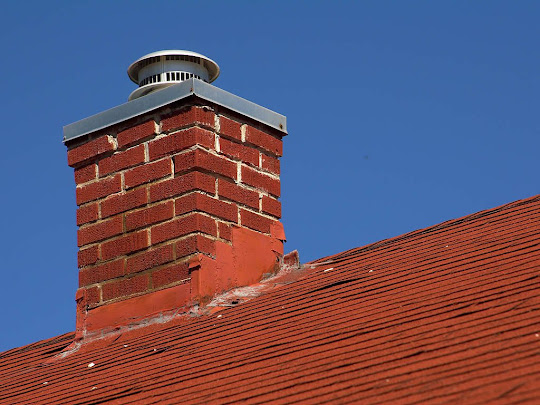How to make your fireplace more efficient?
How to make your fireplace more efficient?
A fireplace not only adds warmth to your home but also creates a cosy ambience. To maximize its benefits, making your fireplace more efficient is essential. In this blog, we’ll explore the concept of an efficient fireplace, and the steps to enhance its efficiency, discuss the importance of doing so, and help you create a toasty haven in your home.
What is an Efficient Fireplace?
An efficient fireplace produces ample heat, minimizes heat loss, and uses fuel effectively. It ensures that the warmth generated goes to heating your home rather than escaping up the chimney. Now, let’s delve into steps to achieve just that.
Which steps to follow to Make Your Fireplace More Efficient?
Let’s have a look at more details for each of the steps to make your fireplace more efficient:
- Regular Maintenance: Regular maintenance includes cleaning the chimney, inspecting for creosote buildup, and ensuring that the damper operates correctly. A well-maintained fireplace operates more efficiently.
- Use Seasoned Wood: Seasoned wood has a lower moisture content, making it easier to ignite and burn more efficiently, producing more heat and less creosote.
- Install Glass Doors: Glass doors on your fireplace can help radiate heat into the room and prevent indoor air from escaping up the chimney when the fire is not in use.
- Seal the Chimney: Installing a chimney damper or flue seal allows you to close off the chimney when the fireplace is not in use, preventing drafts and heat loss.
- Efficient Grates: Grates with a design that promotes better airflow can help in the combustion process, allowing the wood to burn more efficiently.
- Zone Heating: Instead of trying to heat your entire home with the fireplace, focus on heating the rooms you use most frequently, allowing you to set the thermostat lower.
- Pellet Stove Insert: Consider installing a pellet stove insert, which burns compressed wood pellets efficiently, providing consistent and controllable heat.
- Proper Sizing: Ensure that your fireplace is appropriately sized for your space, preventing overheating or inadequate heating.
- Air Sealing: Seal any gaps or cracks around the fireplace and chimney, preventing cold air from entering and warm air from escaping.
- Use a Heat Reclaimer: A heat reclaimer, also known as a heat exchanger, captures wasted heat and circulates it back into the room, improving efficiency.
- Add a Fireplace Insert: Installing a fireplace insert, which is a closed-combustion unit, can dramatically increase efficiency by providing controlled heat output.
- Burn Hardwoods: Hardwoods like oak, hickory, and maple burn hotter and longer than softwoods, making them more efficient choices.
- Efficient Fireplace Tools: Tools like a fireplace blower or fan can help distribute heat more effectively, increasing overall efficiency.
- Caulking and Insulation: Proper caulking and insulation around the fireplace and chimney prevent drafts and heat loss, improving efficiency.
- Adequate Air Supply: Ensure your fireplace has access to sufficient combustion air, allowing it to burn wood more efficiently and produce more heat.
- Close the Damper: Always remember to close the damper when the fireplace is not in use to prevent drafts and heat loss.
- Install a Catalytic Converter: Catalytic converters improve combustion efficiency by promoting a secondary burn of smoke and gases.
- Burn Paper and Cardboard First: To start a fire quickly and efficiently, use paper and cardboard as kindling, as they ignite easily.
- Add a Heat Reflector: A heat reflector mounted at the back of the fireplace directs more heat into the room, reducing heat loss up the chimney.
- Upgrade to an EPA-Certified Fireplace: Replacing your existing fireplace with an EPA-certified model, which is highly efficient and low-emission, can provide the utmost in fireplace efficiency.
Importance of efficient Fireplace
An efficient fireplace offers a multitude of advantages that significantly impact your home and well-being. Firstly, it substantially contributes to lowering energy costs, allowing you to rely less on alternative heating sources. This not only lightens the financial burden but also reduces your environmental footprint. An efficient fireplace is eco-friendly, as it minimizes emissions and conserves wood resources. Furthermore, it plays a pivotal role in creating a warm and inviting living space during the chillier seasons, fostering a cosy atmosphere that enhances comfort and quality of life. In essence, an efficient fireplace is a valuable asset that harmonises cost savings, sustainability, and overall well-being.
Conclusion
A more efficient fireplace serves as a dual-purpose gem, keeping your home warm while trimming your heating expenses and lessening your environmental impact. By incorporating the steps detailed in this guide, you can elevate your fireplace into a powerhouse of efficient heating, making your winters not only cosier but also more budget-friendly. Whether you’re considering fireplace inserts, an outdoor fireplace, or any other upgrade, these measures will not only enhance the warmth but also reduce your ecological footprint, ensuring that you enjoy the perfect blend of comfort, savings, and sustainability during the chilly seasons.
.jpg)
.jpg)
.jpg)

Comments
Post a Comment